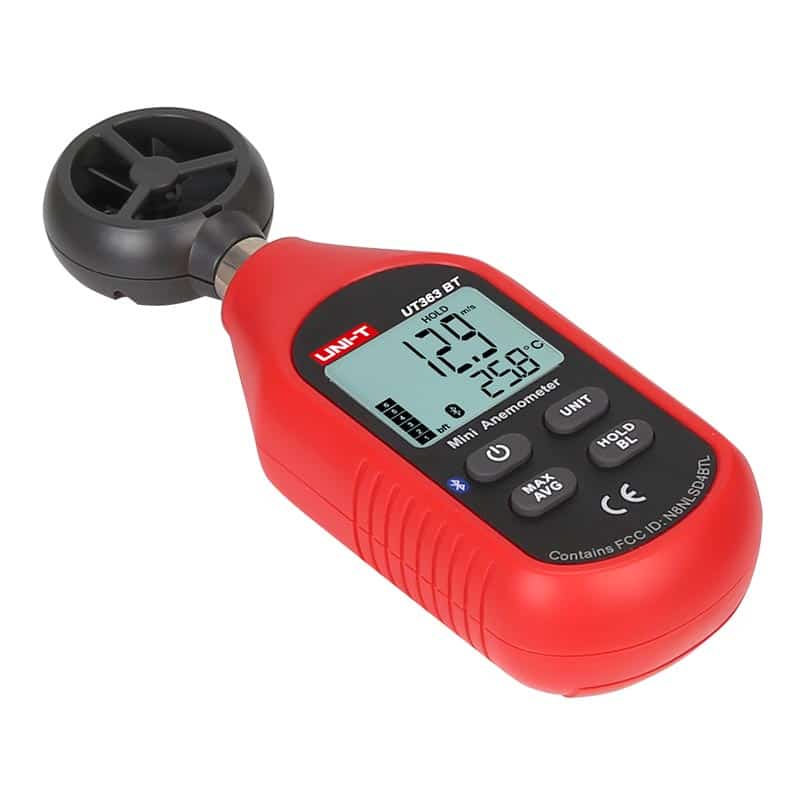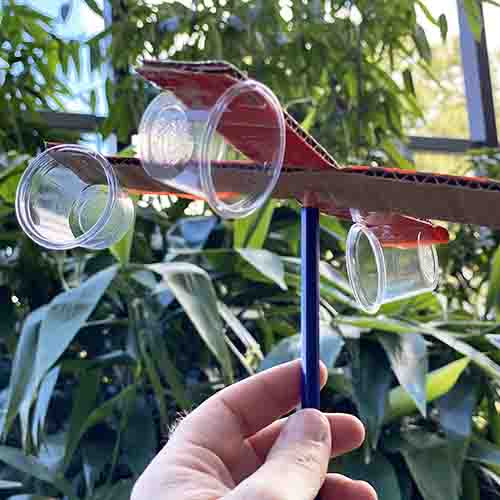Expert Tips for Calibrating Your Anemometer for Optimum Efficiency
Expert Tips for Calibrating Your Anemometer for Optimum Efficiency
Blog Article
Discovering the Features and Benefits of Anemometers for Weather Enthusiasts and Professionals
From cup anemometers to sonic anemometers, each kind brings its special set of benefits and applications, shedding light on various aspects of atmospheric problems. As we delve right into the functions and advantages of anemometers, a deeper understanding arises not only of dominating weather condition phenomena but additionally of the wider implications for markets like wind energy manufacturing and environmental research study.
Significance of Anemometers in Climate Tracking
Anemometers play an important duty in weather condition tracking by providing accurate measurements of wind rate, aiding in projecting and understanding weather patterns. These instruments, ranging from typical cup anemometers to modern-day ultrasonic anemometers, are important for meteorologists, scientists, and weather fanatics alike. By determining wind rate, anemometers assist in identifying the strength of climate phenomena such as hurricanes, hurricanes, and storms. Furthermore, they give beneficial data for air travel, maritime procedures, and numerous industries that are sensitive to wind conditions.

Types of Anemometers and Their Applications
With the vital duty anemometers play in climate tracking and forecasting, understanding the numerous kinds of these instruments and their applications becomes vital for experts and enthusiasts in the area. One of the most typical sorts of anemometers consist of mug anemometers, vane anemometers, hot-wire anemometers, and ultrasonic anemometers. Mug anemometers consist of 3 or 4 cups placed on straight arms that rotate with the wind, measuring its rate. Vane anemometers, on the various other hand, use an openly turning vane to straighten with the wind direction, giving both wind rate and direction dimensions. Hot-wire anemometers operate based on the concept of convective warmth transfer, where the cooling impact of the air circulation is determined to determine wind rate. Ultrasonic anemometers use ultrasonic audio waves to determine wind rate and direction properly.
Cup anemometers are ideal and durable for basic climate monitoring, while vane anemometers are favored for directional measurements. Ultrasonic anemometers are non-intrusive and provide high precision, usually used in research and specialized weather condition tracking applications.
Benefits of Utilizing Anemometers in Projecting
In weather forecasting, the use of anemometers uses vital benefits for improving the accuracy of weather projecting. Anemometers gauge wind rate and direction, offering essential data for forecasting climate patterns. By integrating wind data right into projecting designs, meteorologists can better recognize the motion of weather condition systems, anticipate changes in weather, and problem much more precise projections.
Additionally, anemometers play an important role in analyzing prospective weather hazards. Keeping track of wind rates assists forecasters forecast serious weather occasions such as typhoons, hurricanes, and wintertime storms with higher accuracy. This very early warning system makes it possible for authorities to provide prompt notifies and implement needed safety steps, lowering the threats to More Info life and property.
Additionally, anemometers aid in optimizing renewable resource manufacturing. By analyzing wind patterns, meteorologists can identify appropriate locations for wind ranches and predict energy result, contributing to the effective generation of wind power.

Anemometers in Wind Power Manufacturing
Given the important duty anemometers play in providing accurate wind data for weather condition projecting and threat assessment, their relevance reaches the world of wind power manufacturing. Anemometers are essential instruments in the field of wind energy, where the measurement of wind speed and direction is vital for establishing the feasibility and efficiency of wind turbine installments. By accurately measuring wind speeds at varying heights, anemometers help optimize the positioning and layout of wind generators to optimize power result.
In wind ranches, anemometers are purposefully positioned to gather real-time wind information that is utilized to examine the potential power manufacturing of a website. This data is critical in figuring out the financial feasibility of wind energy projects and in forecasting power generation to make certain grid security. In addition, anemometers aid in keeping an eye on wind conditions to optimize generator efficiency, stop damage from high winds, and make certain the safety and security of personnel operating in the location of wind generators.
Enhancing Weather Condition Comprehending With Anemometers

Anemometers play a key duty in boosting our understanding of microclimates. These local climate condition can vary significantly from more comprehensive local projections, making it essential to have exact information for details locations. anemometer. By purposefully positioning anemometers in different places, researchers can collect thorough info on exactly how wind behaves in different surfaces, metropolitan atmospheres, or bodies of water
Moreover, anemometers add to enhancing weather condition forecasting models by providing real-time information on wind habits. This information is specifically useful for predicting extreme weather condition events, maximizing farming practices, and sustaining markets like aeronautics and maritime navigating. Overall, anemometers informative post are invaluable tools that enable us to dive deeper right into the complexities of weather systems, eventually leading to more exact predictions weblink and better-informed choices.
Verdict
In conclusion, anemometers play a crucial role in weather condition surveillance and projecting by measuring wind speed and direction. Anemometers likewise have applications in wind power production, additional highlighting their relevance in both weather forecasting and renewable energy industries.
From mug anemometers to sonic anemometers, each kind brings its one-of-a-kind collection of advantages and applications, losing light on different aspects of climatic problems. These instruments, varying from conventional cup anemometers to contemporary ultrasonic anemometers, are vital for meteorologists, scientists, and weather lovers alike. The most common types of anemometers include mug anemometers, vane anemometers, hot-wire anemometers, and ultrasonic anemometers. Mug anemometers are suitable and robust for general weather condition tracking, while vane anemometers are favored for directional measurements. Anemometers are necessary tools in the area of wind power, where the dimension of wind speed and direction is important for figuring out the expediency and effectiveness of wind generator setups.
Report this page